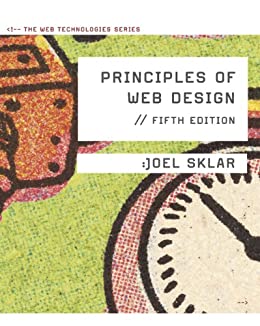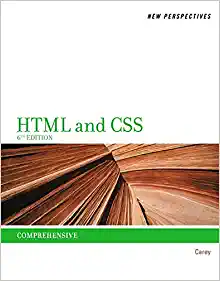Test Bank For Principles of Web Design The Web Technologies Series 5th Edition by Joel Sklar
Chapter 1: HTML and the Modern Web
TRUE/FALSE
- The W3C was founded before HTML was first formalized.
ANS: F PTS: 1 REF: 9-10
- The various committees that make up the W3C look to expand and set standards for the many new Web technologies that have emerged.
ANS: T PTS: 1 REF: 10
- XML does not allow you to create your own elements.
ANS: F PTS: 1 REF: 11
- It is best practice to use all uppercase characters for element and attribute names when writing HTML5.
ANS: F PTS: 1 REF: 20
- HTML is a What You See Is What You Get (WYSIWYG) layout tool.
ANS: F PTS: 1 REF: 29
- Most recent HTML authoring tools offer syntax validation and code conversion.
ANS: T PTS: 1 REF: 29
- A page that you create in an editing interface will always look exactly the same in every browser.
ANS: F PTS: 1 REF: 30
- Following the W3C standards does not mean that your site has to be visually uninteresting, although you may have to sacrifice the latest multimedia enhancements.
ANS: T PTS: 1 REF: 31
- Standardizing coding practices helps clean up most common coding errors.
ANS: T PTS: 1 REF: 32
- Migrating from HTML to HTML5 in an existing site should be done as quickly as possible.
ANS: F PTS: 1 REF: 32-33
MULTIPLE CHOICE
- The ____ element tag indicates that the text is a top-level heading.
| a. | <h0> | c. | <h6> |
| b. | <h1> | d. | <h7> |
ANS: B PTS: 1 REF: 4
- HTML elements should be used properly to describe each section of the document based on the ____ structure of the document.
| a. | programming | c. | coding |
| b. | design | d. | logical |
ANS: D PTS: 1 REF: 4
- Every browser interprets HTML in its own way, based on its ____.
| a. | compiler | c. | rendering engine |
| b. | translator | d. | interpreter |
ANS: C PTS: 1 REF: 5
- ____ lets you control the presentation characteristics of an entire Web site with a single style sheet document.
| a. | SGML | c. | CSS |
| b. | WYSIWYG | d. | HTML |
ANS: C PTS: 1 REF: 6
- A ____ is a set of rules that describes the display characteristics of a document.
| a. | template sheet | c. | template |
| b. | style sheet | d. | guide |
ANS: B PTS: 1 REF: 6
- Tim Berners-Lee first proposed HTML at the European Laboratory for Particle Physics (CERN) in ____.
| a. | 1984 | c. | 1989 |
| b. | 1987 | d. | 1991 |
ANS: C PTS: 1 REF: 9
- The need for new markup languages and standards to address new demands is handled by the ____.
| a. | WC | c. | W2C |
| b. | W1C | d. | W3C |
ANS: D PTS: 1 REF: 9-10
- The W3C released version 4.01 of ____ in 1999.
| a. | XHTML | c. | CSS |
| b. | HTML | d. | XML |
ANS: B PTS: 1 REF: 11
- ____ follows the markup rules of ____.
| a. | XML; XHTML | c. | HTML; XML |
| b. | XHTML; XML | d. | HTML; XHTML |
ANS: B PTS: 1 REF: 12
- In XHTML, empty elements are marked with a(n) ____ slash.
| a. | cancel element | c. | closing slash |
| b. | end tag | d. | null string |








Reviews
There are no reviews yet.